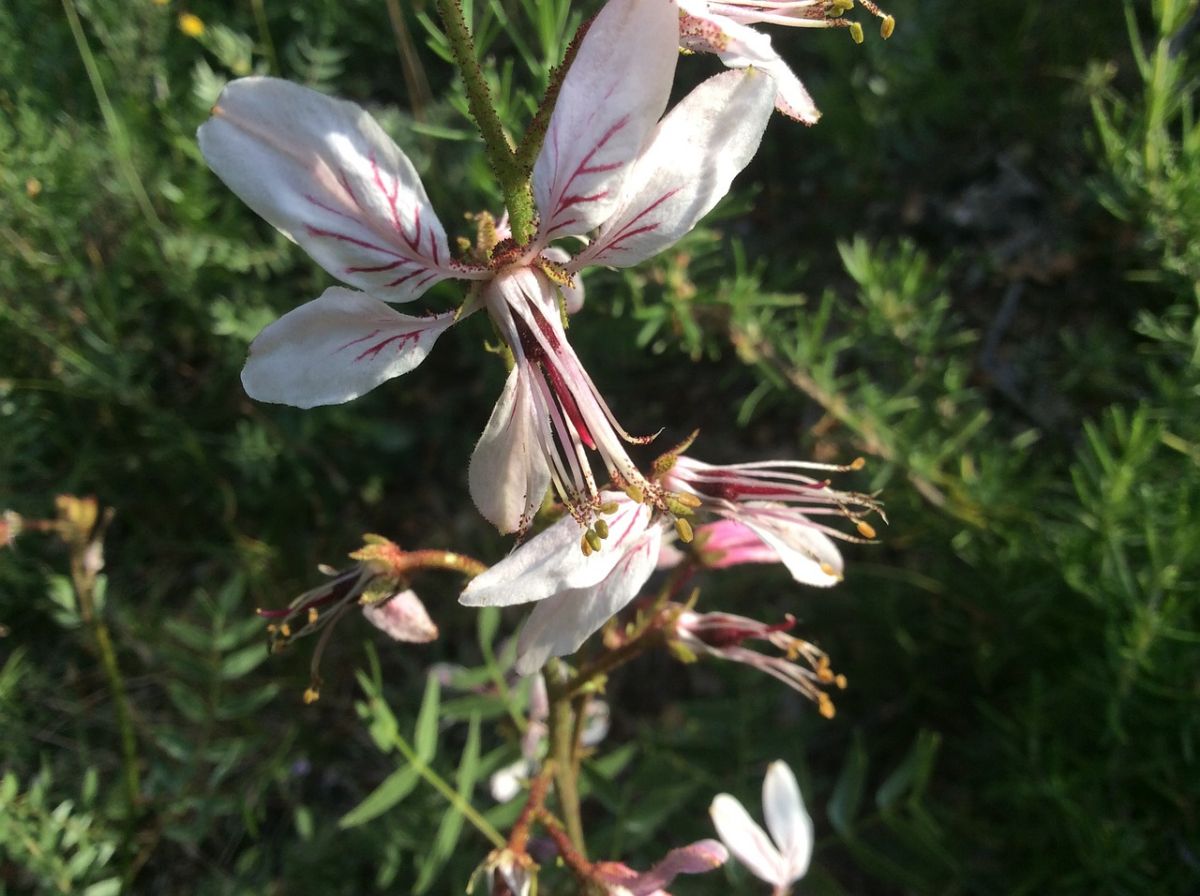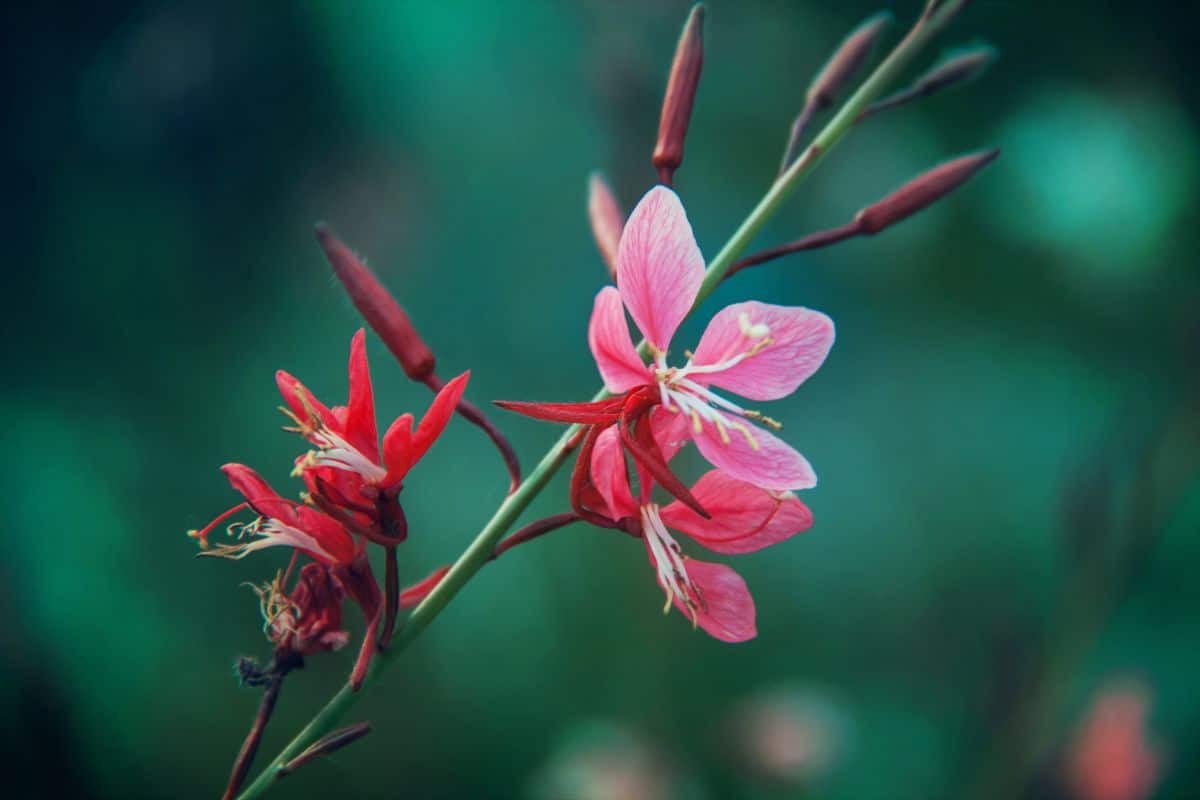
In nature we have many wild or growing plants that are not known as indoor or outdoor plants. One of them is undoubtedly the dictamnus hispanicus, a herbaceous plant that you may have seen on your walks to the countryside, or even giving it some medicinal uses.
But What is the dictamnus hispanicus? What characteristics does it have? Can you have it at home? We will talk about all this below.
Features dictamnus hispanicus

La dictamnus hispanicus It is a herbaceous plant of the Rutaceae family. In Spain it is not known by that name, but rather as tarraguillo, gitanera grass or gitam.
Can reach reach 70 centimeters in height and has light green leaves, as well as fruit. The latter is presented as a capsule. But, without a doubt, what most attracts the attention of this plant are its flowers. It has some very similar to those of orchids, with soft but very vivid colors. Also, its color varies; You can find them from a cream color (yellow white) to a light purple. Inside, on the petals, you will be able to see some darker lines. These are presented in small clusters with curved stamens that protrude from the petals themselves, which makes them look even more beautiful.
Its flowering time is quite short, since it only blooms in May and June. Due to the uses that are given to the plant, and the fact that, to do so, the entire plant must be uprooted, the seeds do not expand, which is why la dictamnus hispanicus It is in danger of extinction in many Spanish areas. It is a perennial plant located mainly in the western Mediterranean area. Provinces such as Alicante, Barcelona, Lleida, Tarragona or Valencia know it quite well, but they are not the only ones. There are also in Murcia, Almería ... Now, despite the fact that it is geographically dispersed, there are very few specimens.
Its natural habitat is in stony areas and dry forests.
Caring for the dictamnus hispanicus

La dictamnus hispanicus, because it is very rare, it cannot be had at home. In many Spanish territories it is legally protected, as it is in Castilla-La Mancha, Murcia, etc.
For this reason, If you see it in nature, it is best if you let it be, since trying to take it home is not recommended.
To this you must bear in mind that the species, according to experts, has a high degree of toxicity, which is why they warn that it is best for them to be handled by botanical professionals.
Uses of dictamnus hispanicus

Despite the above, the dictamnus hispanicus It is a plant that is used for medicinal purposes. Since ancient times it has been used for different uses and, even today, many people trust it to alleviate their discomforts. But what can it do for us?
- Preparation of liquors. In many parts of Spain, the dictamnus hispanicus it is part of the ingredients of some wild herb liqueurs (they are macerations of dry and sweet anise with plants). For example, we can find them in the province of Alicante. In low amounts it is not toxic but gives the liquor a very pleasant taste, hence it is used as such.
- Regularize menstruation. If you have menstrual problems, the plant was the ideal one to help regulate it, arrive on its date and leave on its date. But to use it, it was necessary to know how it should be consumed (usually in infusions). Some speak of taking a tablespoon of this plant for each cup of boiling water, but we do not recommend trying without knowing if it can be dangerous.
- Relieve respiratory problems. Breathing in the scent of the plant helps open your airways, which helps alleviate any problems you have.
- Intestinal inflammations. Intestinal, swelling and related problems can be alleviated with the intake of infusions of the plant or even using the aforementioned liquors.
- Heavy digestions. The same occurs with copious digestions, where an infusion after them can relieve pain and the sensation of bloating.
- Aerophagia. It is a problem of intestinal discomfort and flatulence that can be treated with dictamnus hispanicus.
- Bad breath. Because it is not recommended to ingest it, due to the toxicity and the high degree of poisoning that it can cause, it is possible to take infusions to control bad breath.
- Abortive plant. It was generally used in cattle, when it was not wanted to increase it, however, its use as an abortifacient in humans is not ruled out, especially in ancient times. Even some, instead of as an abortifacient, used it for cattle to go into heat.
- Scent the cabinets. Due to its strong orange aroma, which is not unpleasant but on the contrary, it can be a great help to eliminate the smell of closed cabinets.
- Avoid the proliferation of moths. It is mainly linked to the aroma that the plant gives off, as well as the chemical composition of the plant (keep in mind that it is composed of 70% estragole and 16% d-limonene and dipentenes), which causes moths do not want to approach it, hence it is very effective.
- Clothes bleach. Not all the plant, but the part of the leaves and stems because it has detergent substances that help to whiten the clothes you wash with it.
Now, as we have already warned you, this plant is toxic and manipulating it without knowing is not the best thing to do. It is a photosensitizing plant, that is, it can burn you or cause hyperpigmentation in the areas in contact with the skin if it is exposed to sunlight. This is because it has dictates, which is an alkaloid, essential oil, sapinins and bitter principles.
The leaves can irritate you if you touch them, and if you consume it, you can poison yourself with it.
Curiosities
Did you know the dictamnus hispanicus is it a burning plant? Well yes, when it is in full bloom, its flowers give off a great aroma of orange. But it is made up of a gas, ethylene, and it burns very easily. Reason why many times these plants have ended up being lost.
Other names of the plant, in addition to those that we have mentioned are: fesnillo, shepherd's alfábega, beggar's plant, range, royal tamo, tarraguilla, royal rudder ...
If you have seen it in nature, you have surely found it very beautiful. And for it to continue to exist, it is best not to touch it.